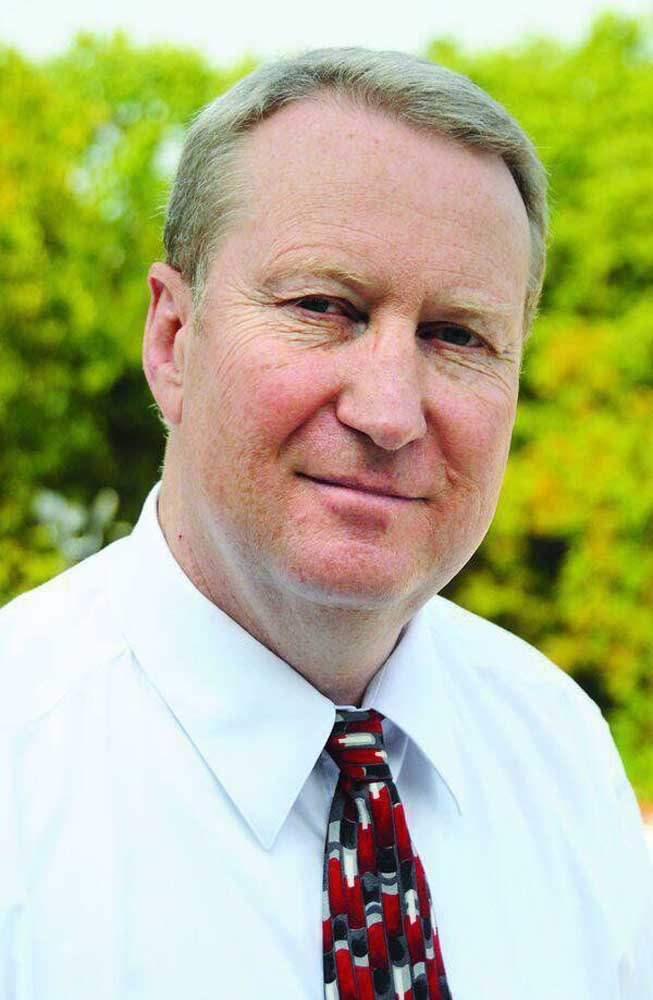Mark Millican: Before it’s too late
Published 6:00 pm Monday, January 2, 2023

- Mark Millican
George McGovern was growing increasingly nervous. Two crew members of the B-24 he was piloting were struggling to manually release the last 500-pound bomb that had become stuck after a mission over Austria in World War II. The last thing he wanted to do was land back in Italy with a bomb still in the rack — it could prove disastrous.
McGovern dropped out of formation and then descended to 12,000 feet.
Trending
The plane lurched when the bomb finally released, and to his horror McGovern saw the projectile flatten a farmhouse in a mushroom explosion. It happened at noon, and he knew from growing up on a South Dakota farm the family had likely gathered inside for lunch. For years after the war, the image and realization haunted him.
Decades later, after a career in public service that included an unsuccessful presidential run (likely harmed by his opposition to bombing in Vietnam, some critics said), McGovern was lecturing at the University of Innsbruck. He was approached afterward by an Austrian filmmaker who wanted to interview him for a documentary on World War II. The producer “wanted McGovern to talk about what it was like bombing Austrian targets,” according to “The Wild Blue: The Men and Boys Who Flew the B-24s Over Germany” by Stephen Ambrose. Reluctantly, McGovern allowed himself to be talked into it.
Predictably, the reporter got around to asking McGovern if he regretted bombing Austria’s historic cities allied with Germany — Vienna, Salzburg, Innsbruck and others.
“Well, nobody thinks war is a lovely affair,” McGovern began. “It is humanity at its worst, it’s a breakdown of normal communication, and it is a very savage enterprise. But on the other hand, there are issues that sometimes must be decided by warfare after all else fails … I thought Adolf Hitler was a madman who had to be stopped. So my answer to your question is no.”
However, McGovern did mention his one big regret — the farmhouse, and the fact it happened on the day his daughter was born back in the States. Of course the reporter pressed him on it, and the story came out. Amazingly, after the documentary aired in Austria a farmer contacted the TV station and told them to tell McGovern it was his farm — and that they had heard the bomber coming and ran out of the house to hide in a ditch.
The farmer shared an incredible statement in light of his nation’s one-time alliance: “I despised Adolf Hitler … (and) I thought at the time that if bombing our farm reduced the length of that war by one hour or one minute, it was well worth it.”
Trending
The preeminent World War II historian-author Ambrose saved the revelation for the very last section of his book about the B-24s. After detailing the bombing runs and thousands of lives lost in the air and on the ground, it seems almost providential in allowing McGovern to die in peace over the matter. How can that be in a worldwide war that saw millions of lives lost, and yet one man’s conscience salved over a misperceived incident?
A couple of days after finishing and contemplating “The Wild Blue,” Teresa and I visited the World War II Home Front Museum on St. Simons Island. The museum about coastal Georgia at war is a vast yet handy collection of little-known information and exhibits about how the area not only supplied troops for the war effort but also trained pilots and specialists for radar, and marshaled citizens to build ships and help defend the coastline.
Not many are aware, for instance, that two U.S oil tankers were sunk just 13 miles off the coast of St. Simons by German submarines in 1942, with 22 American noncombatants losing their lives. Civilians were involved in the rescue effort. Blacks, women, young teenagers and seniors not enlisted in the war effort itself worked in shipyards, logistics and patrolling. Families planted victory gardens, saved and recycled metal, and bought as many war bonds as they could afford.
By the end of the tour, I marveled anew at the fortitude, resolve and patriotism of the American people in that era — and couldn’t help but contrast it with the times we live in today. A few years ago we felt the same thankfulness for our heritage after visiting the National Museum of the Mighty Eighth Air Force near Savannah.
I took a photo of Teresa standing in front of one of the bombers like her father would have flown in as an aviation machinist’s mate during World War II in the South Pacific.
Observant visitors to the World War II museums will note volunteers mostly handle the docent duties, and that oftentimes there are receptacles for donations with accompanying text explaining the need.
Clearly we’ve lost thousands of our World War II veterans in recent years, and soon there will be none left living. It may be that one day only descendants of these men and women who served in this great global conflict 80 years ago will care about preserving the institutions that spotlight their valor and sacrifice.
With the current trend toward historical revisionism and away from patriotism in our country, and the incredible waste of taxpayers’ money by our Congress, it doesn’t appear funding for military museums will appear near the top of many lists — if they’re on one at all.
That may be a pessimistic outlook; but on the other hand, perhaps we shouldn’t wait too long to visit — and be moved and inspired by — these valuable repositories that explain how we got our freedom … before it’s too late.





